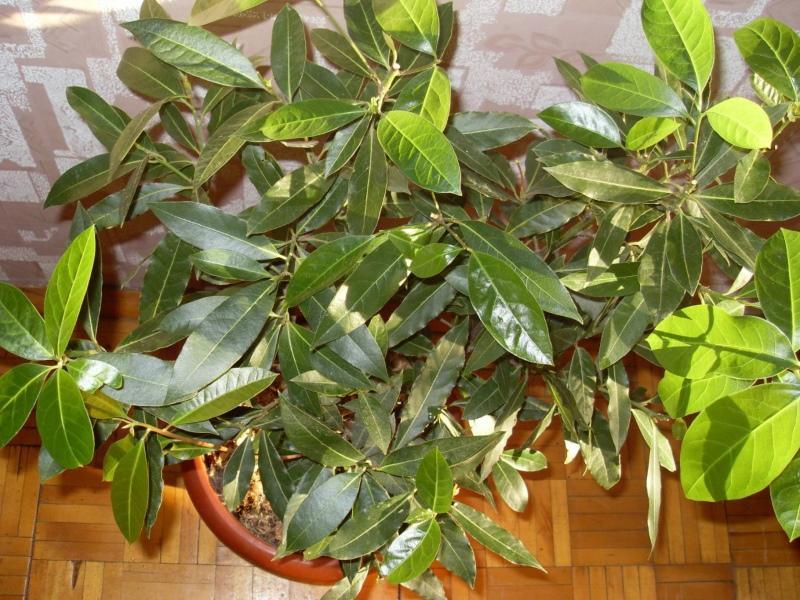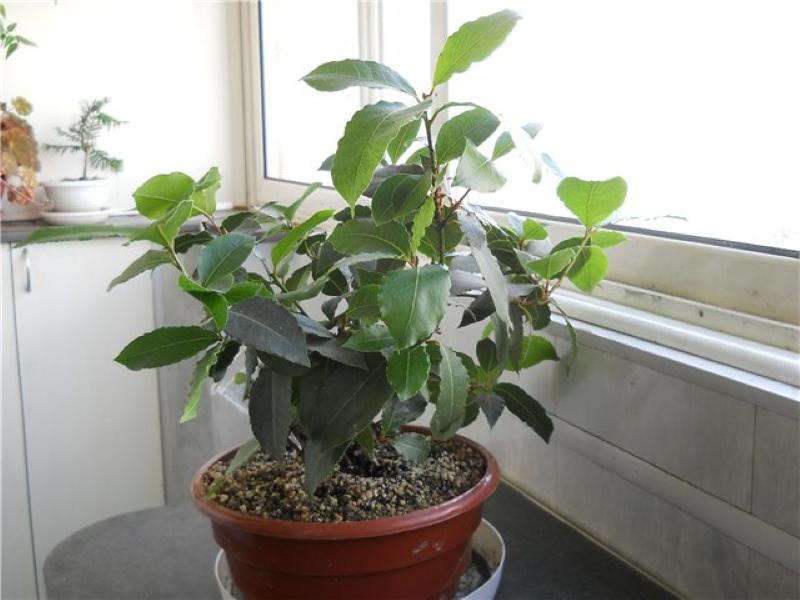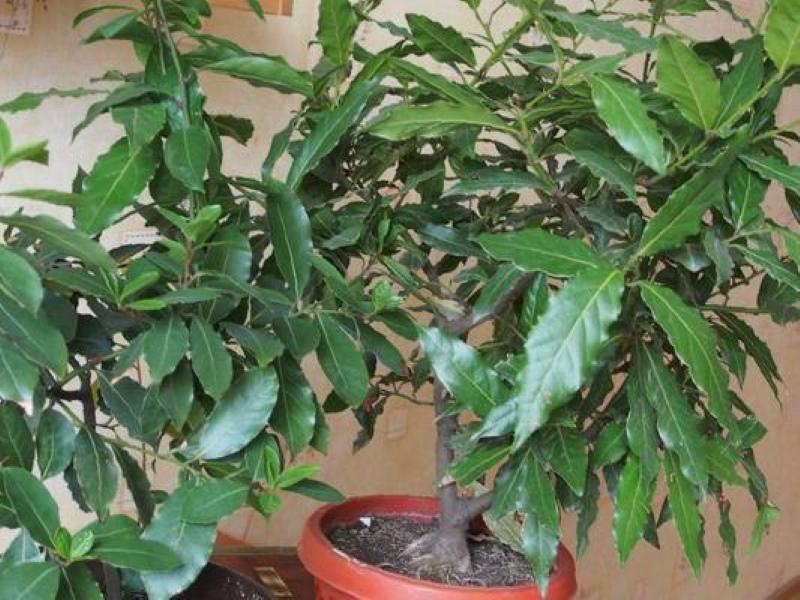Need a spice at hand - plant a laurel tree, home care for an unpretentious bush
 Recently, it has become fashionable to grow not only flowers in pots, but also open field crops. Parsley, lettuce, basil, tomatoes and even cucumbers grow well and delight with harvest in apartments. The laurel tree is no exception, home care for which does not differ from growing indoor flowers. Although it has some nuances, primarily associated with the characteristics of the growing season of culture.
Recently, it has become fashionable to grow not only flowers in pots, but also open field crops. Parsley, lettuce, basil, tomatoes and even cucumbers grow well and delight with harvest in apartments. The laurel tree is no exception, home care for which does not differ from growing indoor flowers. Although it has some nuances, primarily associated with the characteristics of the growing season of culture.
A representative of the laurel family came to us from the Mediterranean. The plant is widely used as an ornamental crop. The evergreen bush looks very beautiful, besides, it is also beneficial. Its leaves can be cut off and added to dishes instead of dry spices. Although the laurel develops slowly, the haircut only benefits him. From spring to autumn, a lush tree grows overgrown with young twigs, and for the winter it retires. It does not shed foliage, but development is suspended until daylight hours again increase.
Laurel requirements for temperature and lighting

If a laurel tree needs a lot of light, then in terms of temperature, it prefers moderation, even during the growth period. In the summer, it is advisable not to allow the room to be hot and the temperature to rise above 26 ° C.
The rest period at the laurel should take place in the cool at all. In order for a plant to fully rest, it needs no more than 15, and ideally 12 ° C of heat.
Laurel tree - home care
 If you immediately provide the bush with comfortable conditions, further care for it will not be difficult. It will be enough:
If you immediately provide the bush with comfortable conditions, further care for it will not be difficult. It will be enough:
- Water abundantly and regularly during the growing season. In winter, watering should be rare.
- Spray often - laurel needs high humidity.
- Feed once a month with a mineral complex for decorative deciduous plants. In winter, laurel does not need fertilizer.
- In late summer or early spring, carry out formative and sanitary pruning. The culture responds well to it, which makes it possible to give the plant any shape.
The laurel tree grows slowly and does not need frequent transplants. And he doesn't need a big pot. New dishes for a grown bush should be only a couple of centimeters larger in diameter. And you need to transplant it only when it becomes very crowded. Laurel prefers slightly alkaline and loose soil, with the addition of peat, humus and some sand.